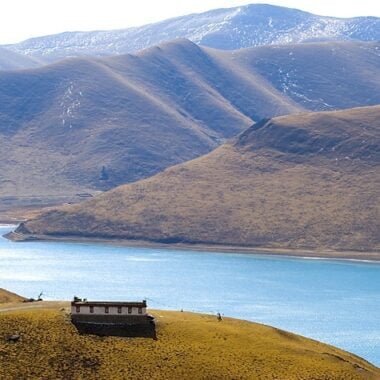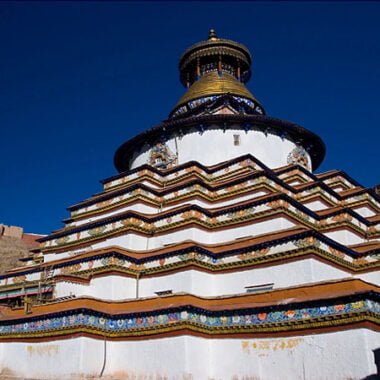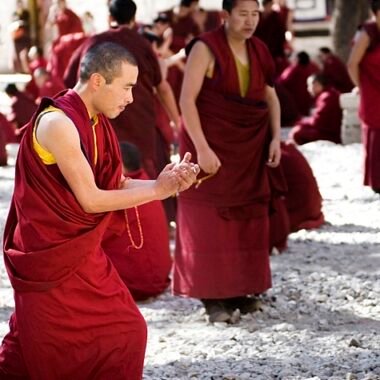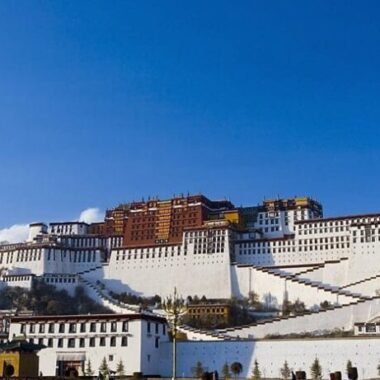Why Winter is a Good Time to Visit Tibet: Benefits & Travel Tips
While many choose to visit Tibet during the warmer months, winter (November to February / March) offers unique advantages that make it…
While many choose to visit Tibet during the warmer months, winter (November to February / March) offers unique advantages that make it a fantastic time to experience the region. Here’s why winter in Tibet is worth considering and what you need to know before planning your trip.
Benefits of Visiting Tibet in Winter
1. Fewer Crowds
Winter is the off-season in Tibet, which means you can experience some of the most famous attractions without the large crowds that typically swarm in the summer. Popular sites like Potala Palace, Jokhang Temple, and Namtso Lake will be less crowded, offering a more peaceful and intimate experience. If you prefer solitude and a more personal connection with the place, winter is ideal.
2. Lower Prices
Traveling to Tibet during the winter months can also be more affordable. With fewer tourists, many hotels, tours, and flights may offer discounts. Whether you’re looking for budget accommodations or a luxury retreat, you’ll likely find lower prices compared to the peak season, making it easier to enjoy a more comfortable experience for less.
3. Winter Landscapes
Tibet’s snow-capped mountains and frozen lakes create a mesmerizing winter wonderland. The beauty of the landscape during this time is striking. Imagine standing in front of the iconic Mount Everest, with the crisp, clear air and the surrounding snow-covered peaks. The stillness of winter only adds to the serenity and majesty of the Tibetan plateau. For photography enthusiasts, the winter light and scenery are ideal for capturing breathtaking moments.
4. Spiritual Atmosphere
Tibet is renowned for its spiritual significance, and in the winter, there is a palpable tranquility that enhances the meditative and spiritual atmosphere. The fewer distractions and quieter temples allow for a more reflective experience. You can visit monasteries like Drepung and Sera in a peaceful environment, where you can spend time reflecting or witnessing the Buddhist monks’ winter rituals.
5. Clearer Skies and Crisp Air
Winter brings crisp, clean air and generally clear skies to Tibet. You’ll have the chance to take in panoramic views of the Himalayan mountains with virtually no cloud cover. The high-altitude sun can still be quite strong, and with the clear winter air, the visibility is often better than during the hazier summer months.
Things to Keep in Mind When Traveling to Tibet in Winter
1. Cold Weather and Proper Clothing
Tibetan winters are notoriously cold, especially in the higher altitudes. Average temperatures can dip below freezing, and at night, it can get extremely chilly. Be prepared with proper clothing, including thermal layers, a good-quality down jacket, gloves, a hat, and sturdy boots. Keep in mind that despite the cold temperatures, daytime can still be sunny and relatively mild, especially in cities like Lhasa.
2. Altitude Sickness
The high altitude of Tibet can lead to altitude sickness, regardless of the season. Winter’s cold, dry air can make the symptoms worse, so it’s crucial to give your body time to acclimatize. Make sure to stay hydrated, avoid overexertion, and allow for a few days of rest in Lhasa before embarking on any tours to higher altitudes, such as Everest Base Camp or Namtso Lake. If you feel unwell, seek medical assistance immediately.
3. Limited Accessibility to Remote Areas
While major cities like Lhasa are accessible year-round, some more remote areas and trekking routes may be harder to reach during the winter. The harsh weather conditions, such as snowstorms and icy roads, can cause delays or block access to certain regions. It’s important to check road conditions and discuss with your tour provider to ensure your itinerary can be completed safely.
4. Limited Services
Some tourist services, such as certain hotels, restaurants, and even some attractions, may have limited hours or be closed during the winter months. It’s important to plan ahead and make sure you confirm your accommodations and tour bookings well in advance. Local festivals and special events, like the Tibetan New Year (Losar), may also affect the availability of certain services, so it’s a good idea to coordinate with your tour guide.
5. Shorter Days
During winter, the days are shorter in Tibet, with the sun setting as early as 5:30 PM. Be sure to plan your activities and sightseeing during daylight hours to make the most of the limited daylight.
Conclusion
Visiting Tibet in the winter offers a unique and serene experience, allowing you to enjoy the region’s stunning landscapes, rich spiritual culture, and vibrant heritage without the crowds and high-season prices. However, the harsh weather conditions and the high altitude require careful planning and preparation. By bringing the right gear, acclimatizing properly, and staying informed about local conditions, you can have an unforgettable winter adventure in Tibet.
Whether you’re exploring the holy sites in Lhasa, trekking through the snowy mountains, or witnessing Tibetan Buddhist practices in a quiet monastery, winter in Tibet offers a truly special journey that will stay with you for a lifetime.









